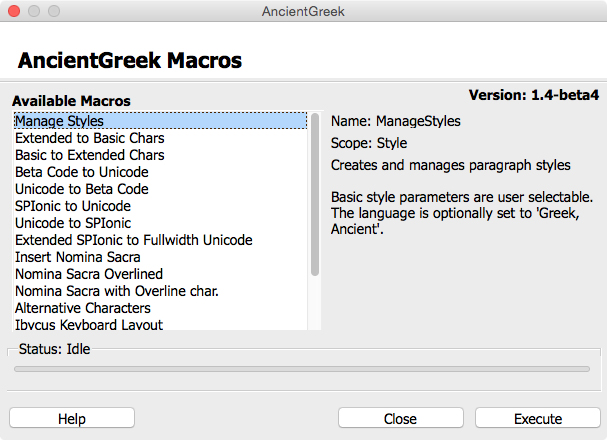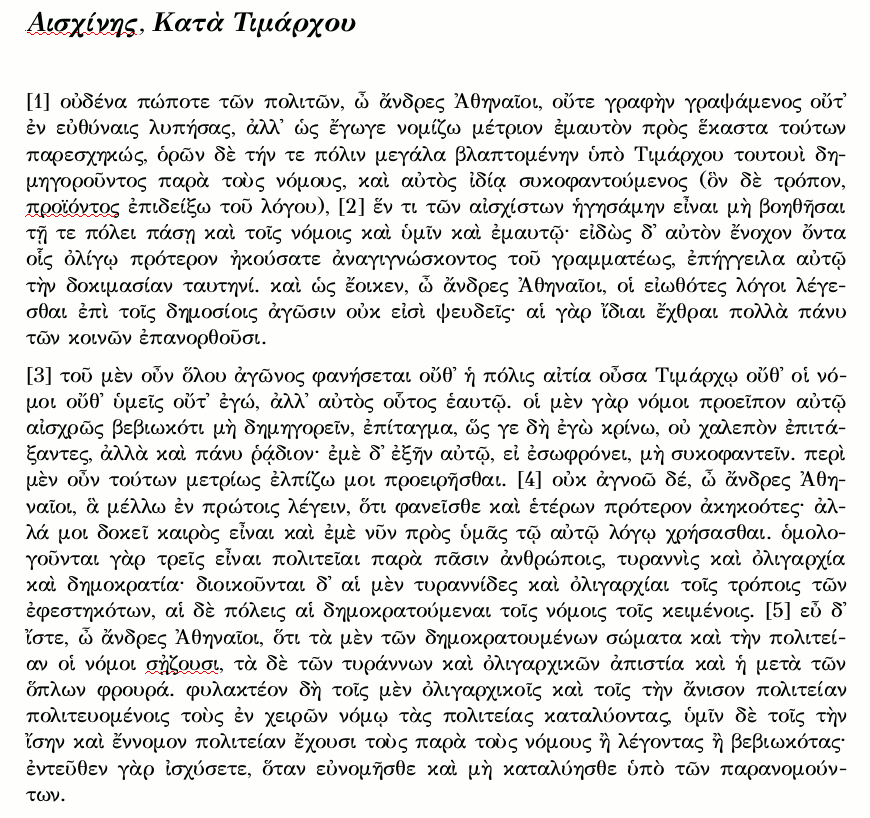LibreOffice 5.2.1 Loading Error – Workaround
Some AncientGreek users have reported an error message appearing when launching LibreOffice.
Findings
- There is no clear reason for this error to occur.
- Despite the error message, the extension functions normally after dismissal.
Since the root cause is unknown, no direct fix is available. However, a simple workaround has been tested and works reliably.
Workaround Steps
- When the error message appears, click "OK" and wait for LibreOffice to load completely.
- Open the code window and press ENTER on an empty line to mark the document as modified.
- Click "Compile" and then "Save".
- Close both the code window and LibreOffice.
- Restart LibreOffice—the error should no longer appear!
Demonstration Video
To see this process in action, watch this video. The demonstration is on a clean LibreOffice and AncientGreek installation on MacOS, but the same steps apply to all operating systems.
This solution has worked for all users who reported the issue. Hopefully, it works for you too!
What is it all about?
Editing Ancient Greek text has always been a burden. Several encodings, each with its own pros and cons, special keyboard drivers for typing and fonts for displaying text have been in use (and still are), and reading a text file someone else has written was not always a success.
Fortunately, all this has changed with the ongoing standardization of Unicode. Unicode may not be perfect, but it's natively supported by every Operating System, and as far as common users are concerned, makes Ancient Greek editing easier, enabling them to use every-day text editors (Microsoft Word, LibreOffice, OpenOffice, Abiword, etc.) without caring about special configurations, "exotic" encodings, keyboard drivers and the like.
LibreOffice (and OpenOffice before that) is the text editor I have been using since... for ever :), and I have always been looking for an open source solution to the Ancient Greek (and Modern polytonic Greek) text editing chaos.
Lately, I have stumbled upon the Tex Hyphenation Project, which provides hyphenation patterns for Ancient Greek. Looking into it, I came across the Ancient Greek Spell Checker extension for OpenOffice.
So, I thought I'd give it a try and create an extension to provide Ancient Greek Language Support for both LibreOffice and (if possible) OpenOffice, using these resources. This site is the result of my effort...
The extension at hand, called AncientGreek (very ground-breaking of me, I know), provides spell checking and hyphenation patterns for Ancient Greek Language. Furthermore, a set of macros have been included in the extension so that editing Ancient Greek Unicode text is made easier. These macros are accessible through a dialog, menu entries and toolbars.
February 2014
Features^
- Ancient Greek Language Spell Checker
- Ancient Greek Language Hyphenation Patterns
- Text manipulation Macros (text conversion between Beta Code, SPIonic etc. to Unicode, ancient greek text detection, alternative characters handling, Nomina Sacra expressions, etc.)
- LibreOffice / OpenOffice Styles Management Macros
- Ibycus Keyboard Layout to type Ancient Greek text
- Platform independent (works on Windows, Linux and Mac OS)
- GUI integration through toolbar and menu activated dialog

AncientGreek dialog on Mac OS
AncientGreek has been tested with:
- LibreOffice series 7 on Linux (Debian and Manjaro), MacOS (Catalina and Big Sur) and Windows (7 and 10 and 11)
- OpenOffice 4.1.11 on Debian Linux

Sample text: The first few paragraphs of Aeschines, Against Timarchus edited in LibreOffice 4.2.1.1 with AncientGreek extension installed (font: GFS Didot, 11pt). AncientGreek does a pretty good job spell checking and hyphenating the text..
What AncientGreek is (and what it is NOT)^
AncientGreek is:
- A spell checker for "Greek, Ancient" language (grc locale)
- A hyphennator for "Greek, Ancient" language (grc locale)
- A text conversion package (Beta Code, SPIonic etc.)
- An Ancient Greek keyboard layout
AncientGreek is NOT:
- A spell checker or a hyphennator for "Modern polytonic Greek" language
- A spell checker or a hyphennator for "Katharevousa", "Medieval Greek (Byzantine Greek)", or "Koine (Biblical Greek)" language
- A Greek monotonic to polytonic text converter
Spell checking of Ancient Greek is different to that of "Modern polytonic Greek", "Katharevousa", "Medieval Greek (Byzantine Greek)" and "Koine (Biblical Greek)", so there would be no point using AncientGreek extension in text written on those forms of Greek language.
Hyphenation patterns , on the other hand, are identical to "Katharevousa", "Medieval Greek (Byzantine Greek)" and "Koine (Biblical Greek)" patterns, so AncientGreek extension can be used with them, but with caution (as you can see in the relevant image).
Resources used^
In order to "compose" AncientGreek, I used the following resources (extensions, packages, web pages, info):
- LibreGreek a LibreOffice extension which provides spell checking, hyphenation and thesaurus for Modern Greek, published under the GPL. Using this extension I was able to compare hyphenation results between Modern (reference) and Ancient Greek text.
I have also used this extension's structure as a guide to create AncientGreek
.- Based on Tex Hyphenation Patterns for Ancient Greek (rev 592, last updated 13/09/2011, originally published under LPPL), I composed the patterns for LibreOffice (file hyph_grc_GR.dic).
- Ancient Greek Spell Checker extension by Federico Boschetti, created for Open Office (version 2.1.5, last updated 15/02/2010, originally published under LGPL, GPL), was used as spell checker, although its author considers it an alpha version. It is based on Morpheus word list (provided by the Perseus Project).
- The Unicode Standard, Version 7.0, which proved to be an invaluable resource.
- Building and Using Existing Hunspell Dictionaries and TEX Hyphenation as Finite-State Automata provided some info on hyphenation patterns formatting.
- TLG Guide to Unicode Precomposed Forms gave me additional information on the encoding of polytonic Greek using Unicode.
- The TLG® Beta Code Manual 2013 provided access to the complete Beta Code "charset", and made it easier to choose which ones should be included in the relevant macros.
- Wikipedia: Nomina Sacra.
- Institute for Religious Research: The Tetragrammaton and the Christian Greek Scriptures, Appendix K: Nomina Sacra.
- Michael Neuhold's Encodings of Greek.
- Keyboard Map of SPIonic, a public domain Greek font.
- Keyboard Map for SGreek Font from NEW TESTAMENT GREEK online courses.
